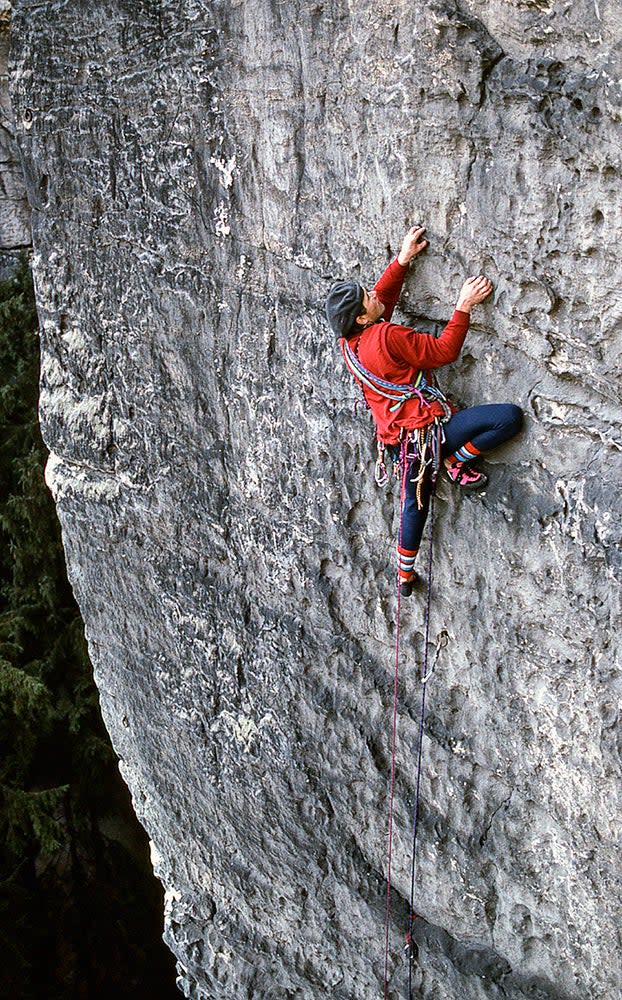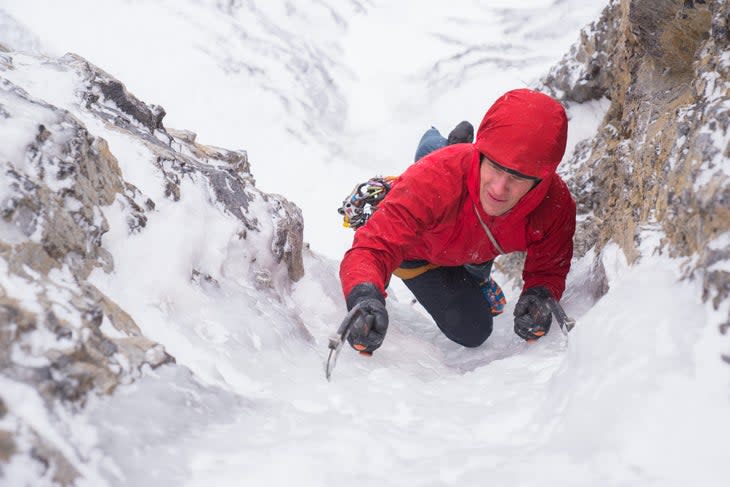6 Things Every Climber Should Do Before They Die
This article originally appeared on Climbing
1. Climb some place old.
When you visit a museum and see the masterpieces made by the ancients with their bare hands, you will be awed. Climbing at an old area will also give you pause, and perhaps inspire you to do something incredible yourself.
Thirty years ago I went to Dresden--arguably the birthplace of rock climbing--where people like Oliver Perry-Smith were climbing hard before I was born, before my parents were born, and before their parents were born.

We like to think that we are pushing standards today, but repeat a route on the sandstone of the Sachsische Schweiz and you'll get a reality check. The routes are long, steep and were climbed barefoot, no chalk, onsight and with no gear except for an occasional ringbolt or jammed knot. I backed off a completely unprotected 5.8 that Perry-Smith put up around 1900, and the grades reach into 5.13 for routes done in the old classical style.
Perry-Smith was an American studying in Germany, who made ascents of big routes around Dresden in the early 1900s. One of his routes, the Perryriss (5.9) on the Daxenstein was so beyond the imagination of other climbers in 1913 that they accused him of lying. To quiet them, he soloed the route and carved "Perry" in the rock on the second pitch. You can see it still there today. You should go see it.
2. Do a first ascent.
History doesn't note the people who made the second ascent. Many leading climbers today only repeat routes, and that is too bad because they won't be remembered. No one remembers the second human on the moon, the second team to climb Everest, let alone the 1,000th person to climb Easy Skankin.
Putting up a route will get you a piece of immortality, and while you still live it will make you appreciate the hard work behind first ascents. The next time you think a route is a little dirty, or has a hard clip, or has a name you think is lame, you'll understand. Repeating a route is like being a passenger in a car. If you don't like where it is headed, get behind the wheel.
3. Replace the worn-out anchor on a route you didn't put up.
Gandhi said that "The best way to find yourself is to lose yourself in the service of others." Finding a route that needs new bolts or anchor chains or lowering carabiners and replacing them won't get your name in the book, but it will make you happy. While you are at it, upgrade two routes and get really happy.
4. Go ice climbing.
Whoever says ice climbing is easy hasn't climbed ice. Almost every winter I introduce a rock climber to ice, and every single one of them has said that they have never been as pumped out of their mind rock climbing. Climbing a pitch of ice is as physical as chopping a cord of firewood and as intimidating as swimming across a big, cold lake during a storm. Make that chopping the wood while swimming across the lake. So why do it? Because it makes rock climbing seem easy.
Face it, most climbs don't take you anywhere. You struggle up 35 meters rock to where ... ? An arbitrary ending equipped with a couple of scraps of chain and worn carabiners? How unromantic.

5. Climb a tower.
Climbing began as a sport because people desired to stand on the top of a mountain. Conquering an objective meant something then, and it still does despite nearly everyone nodding to the cop-out adage that "it's the journey, not the destination."
Fortunately, you can experience the euphoria enjoyed by Whymper and Messner by climbing any one of a nearly limitless supply of desert towers (in Europe, try the Dolomites.) Bagging a tower is like owing your own private island, or being marooned on one. My favorite summit is the needle point of the
Ancient Art in the Fisher Towers. Getting there isn't too hard and the route isn't long, but the summit barely has enough room for one person to stand, and when you are there you can't help but wonder if the tower is going to fall over with you on it. Then you look uphill and see that nearby Cottontail Tower, the Titan, and Echo Tower are even higher. Better climb those ones, too.
6. Get benighted.
Getting stuck overnight on a climb isn't something you can script, but if you are lucky and do something more substantial than a sport route or boulder problem, at some point you will find yourself hunkered down on a ledge or standing in slings, watching the sun sink below the horizon. And there you will stay until sunup.
During the night you will be hungry, uncomfortable, and filled with regret, but you'll also have several important realizations. The first one is. "Hey, I'm not going to die."
Understanding that you can survive without a bed or hot food or a shower will make them seem as frivolous as they are. Unnecessary, even. The second realization is that being on a cliff or mountain all night is one of the coolest things you could ever do, a rare opportunity to star gaze and think without interruption, or think of nothing at all.
What's on your list?
Also read:
When Climbing Really Isn't the Most Important Thing (We Know, Hard to Imagine)
Why You Should Enter a Climbing Competition, Even if You Suck
For exclusive access to all of our fitness, gear, adventure, and travel stories, plus discounts on trips, events, and gear, sign up for Outside+ today.

